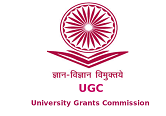Awareness among Dental Students and Practitioners on Biohazards Associated with Prosthodontic Materials
DOI:
https://doi.org/10.55995/j-cpi.2022007Abstract
Background: Dental practitioners are exposed to work-related risks resulting in potential injury with long-term local and systemic adverse effects that impact the overall health and quality of life. Bio-hazards from an increasing number of new prosthodontic materials remain a major problem among dental professionals concerning their safe clinical application, disposal, and recycling without causing possible environmental harm.
Aim: The present study was aimed to assess the awareness levels among dental students and practitioners on biohazards associated with commonly handled prosthodontic dental materials.
Methodology: A cross-sectional questionnaire-based online survey was conducted using Google forms distributed among dental students and professionals across Tamilnadu, India. Statistical Package for Social Sciences software (SPSS version 22.0) was used to analyze the observed data with a significance level set at less than .05 (p < 0.05).
Results: 70.7% considered patients, dentists, dental assistants, and technicians working in close association with dental materials carry substantial health risks while most of the participants reported burning mouth syndrome and contact allergic reactions were frequent adverse reactions encountered. 27.3% and 50.2% were unaware of hazards associated with epoxy resins and ceramic restorations respectively besides 41.9% agreed on nickel as a potential carcinogen and 65.8% showed familiarity with biocompatibility material tests. However, 32.68% were unresponsive to chemicals with potential adverse reactions present in the glove material.
Conclusion: The study clearly shows that mere knowledge and familiarity with prosthodontic dental material and its biological characteristics are insufficient for an individual to assess the potential threat. Thus, an in-depth understanding of various hazardous risks will educate the dental professional for building a better work practice with enhanced personal health care.
Keywords: Allergic reaction, Biocompatibility, Contact dermatitis, Dental Material, Epoxy resins, Monomer.
Downloads
Published
How to Cite
Issue
Section
License
The entire contents of the Journal of Clinical Prosthodontics and Implantology are protected under Indian and international copyrights. The Journal, however, grants to all users a free, irrevocable, worldwide, perpetual right of access to, and a license to copy, use, distribute, perform and display the work publicly and to make and distribute derivative works in any digital medium for any reasonable non-commercial purpose, subject to proper attribution of authorship and ownership of the rights.






